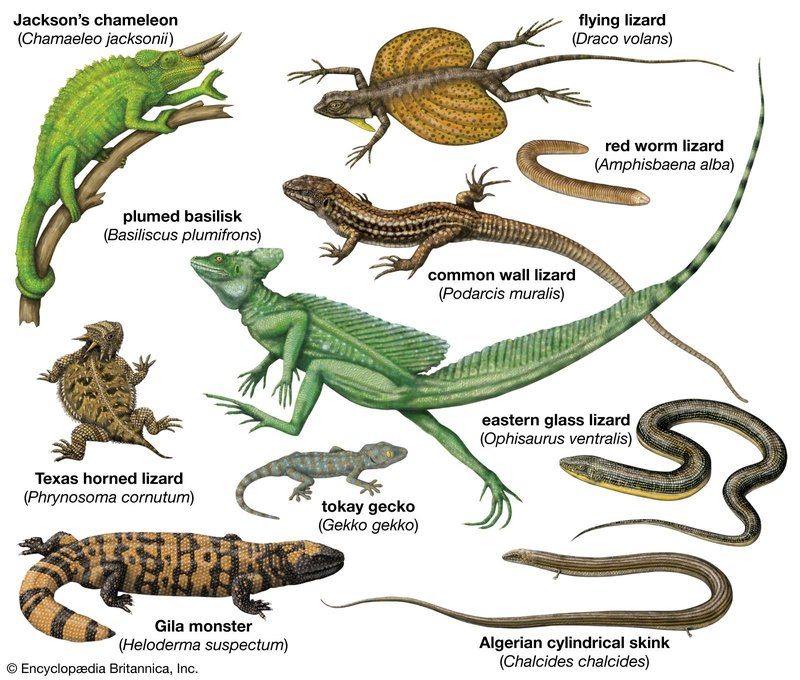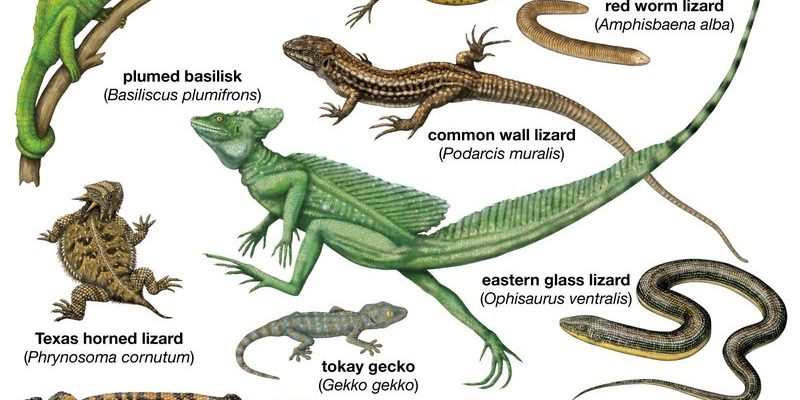
When you think about lizards, you might only consider the popular types like iguanas or geckos. But there’s so much diversity in the lizard family that it can leave you scratching your head in wonder. From their unique adaptations to their quirky behaviors, lizards are just waiting to share their secrets with you. Let me explain some of the lesser-known and fascinating aspects of these scaly friends!
1. Lizards Can Regrow Their Tails
One of the coolest tricks in the lizard world is their ability to regrow their tails. You might wonder why that’s important. Well, when a lizard feels threatened by a predator, it can drop its tail as a distraction to escape. This process is called autotomy.
The tail grows back over time, though it might not look exactly like the original. The new tail is usually made of cartilage instead of bone, so it’s more of a functional replacement than a perfect replica. Interestingly, this tail regrowth can take several weeks to months, depending on the species. It’s like having a built-in escape plan!
The ability to drop and regrow their tails is just one example of how lizards adapt to survive in the wild. Pretty clever, right?
2. They Come in Over 6,000 Species
You might think that all lizards are similar, but you’d be surprised to learn that there are over 6,000 species of lizards spread across the globe. These species vary from the tiny, vibrant anole to the hefty Komodo dragon.
Each of these species has its own unique features and behaviors. For instance, the chameleon is famous for its color-changing abilities, which it uses for communication and camouflage. Meanwhile, the Gila monster is one of the few venomous lizards, using its toxic bite to defend itself and subdue prey.
This incredible diversity means that lizards can be found in various habitats, from tropical rainforests to arid deserts. Honestly, the next time you see a lizard, you might want to ask what species it is—it could be one of the many you’ve never heard of!
3. Lizards Have Unique Communication Styles
You might be surprised to learn that lizards communicate in a variety of ways. Unlike our vocal chatter, lizards mostly rely on body language and colors. Some species use head bobs, tail movements, or even push-ups to express themselves.
Take the Anole, for instance. It has a brightly colored throat flap, called a dewlap, that it puffs out to signal its presence to other lizards. This flashy display can mean, “Stay away!” or “I’m ready to mate!” depending on the context.
In fact, lizards can also change colors in response to their environment or mood. This ability helps them blend in with their surroundings, making them less visible to predators. It’s a fascinating form of non-verbal communication that showcases how well-adapted they are to their environments.
4. They Are Cold-Blooded Creatures
Lizards are classified as ectothermic, or cold-blooded, which means they rely on external sources to regulate their body temperature. Unlike warm-blooded animals that maintain a constant body temperature, lizards must move to warmer areas (like sunny rocks) to warm up or cool down by seeking shade or burrowing into the ground.
This reliance on the environment has some interesting implications. For example, when it’s chilly outside, lizards may become sluggish and less active. Conversely, on hot days, they might be found basking in the sun, soaking up the warmth. Their behavior is a prime example of how they adapt to their surroundings!
As a result, if you’re looking for lizards, the time of day and weather can greatly influence their activity levels. Early morning or late afternoon often brings more visible lizard action than the midday heat.
5. Some Lizards Can “Walk” on Water
Yes, you read that right! There’s a fascinating group of lizards known as water skinks or Jesus lizards that can run across the surface of water. These lizards have specialized toes with flaps of skin that help distribute their weight, allowing them to skim across the top of water bodies.
This unique ability comes in handy when avoiding predators. It’s a wild sight to see a lizard darting across a pond, seemingly defying gravity and physics! Honestly, it makes you rethink the limits of what animals can do.
Additionally, this talent showcases how lizards evolve and adapt to their environments in ways we might never consider. So next time you see a lizard, remember: they just might have more tricks up their sleeves (or scales, rather)!
6. Lizards Have a Unique Diet
When it comes to food, lizards are quite the diverse bunch. Some are strict herbivores, others are carnivores, and many are omnivores. For example, the Green Iguana primarily eats leaves, while the Leopard Gecko loves a diet of insects.
Interestingly, some lizards practice a behavior called *basking* to aid in digestion. By warming up in the sun, they increase their body temperature, which helps their metabolism function better. It’s almost like they’re grilling their meals to taste better!
What you might find surprising is that young lizards often have different diets than adults. Baby lizards typically eat more protein-rich foods, such as insects, while adults may switch to a more plant-based diet. This dietary shift helps them adapt to their growing needs.
7. Some Lizards Are Excellent Climbers
Many lizards are natural-born climbers, with adaptations that allow them to scale trees and rocky surfaces. One of the most famous climbers is the Chameleon, with its zygodactyl feet (two toes facing forward and two back) that enhance its grip on branches.
Then you have the Green Tree Monitor, a stunning lizard that thrives in the treetops. Its long, slender body and strong limbs make it an agile climber, showcasing the incredible adaptations of these creatures.
Climbing helps lizards avoid ground predators and provides access to food sources like leaves and insects. So, if you see a lizard perched high up on a branch, know it’s just doing what it does best!
8. Lizards Are Found on Every Continent Except Antarctica
Lizards are incredibly adaptable creatures and can be found almost everywhere on the planet, from deserts to rainforests. However, you won’t find them in Antarctica. The icy conditions are just too harsh for these cold-blooded reptiles.
In terms of distribution, lizards thrive in warm climates. They’re commonly found in regions like North America, Africa, and Australia. Interestingly, island ecosystems often host unique lizard species that have evolved in isolation, leading to fascinating biodiversity.
If you ever travel, keep your eyes peeled for local lizards, as you might just come across a species that’s entirely new to you. It’s one of the little joys of exploring different parts of the world!
9. Their Lifespan Can Be Quite Long
You might think of lizards as short-lived critters, but many species can live for surprising lengths of time! While smaller lizards like anoles may only live a few years, larger species such as the Iguana or Monitor Lizard can live for decades in captivity.
In some cases, captive lizards have been known to live into their twenties or even thirties! Their lifespan is often influenced by their environment, diet, and care. In the wild, life can be a lot shorter due to predators and environmental factors.
This longevity adds another layer of interest to lizards. Not only are they fascinating to watch, but they’re also long-term companions for those who keep them as pets.
10. Lizards Play an Important Role in Ecosystems
Lastly, let’s spotlight how lizards contribute to their ecosystems. They serve as both predators and prey in food chains. As insectivores, many lizards help control insect populations, while larger lizards are often prey for birds, snakes, and other wildlife.
By maintaining a balance in their habitats, lizards play a crucial role in keeping ecosystems healthy. Their presence can indicate the health of their environment, making them essential players in biodiversity.
So next time you see a lizard, remember it’s more than just a quick dart of color—it’s a significant part of the natural world around us.
Wrapping it up, lizards are wonderfully complex creatures that deserve our attention and appreciation. From their unique adaptations and diverse diets to their roles in ecosystems, there’s so much to learn about them. So next time you spot a lizard in your yard, take a moment to appreciate the little dinosaur among us!

